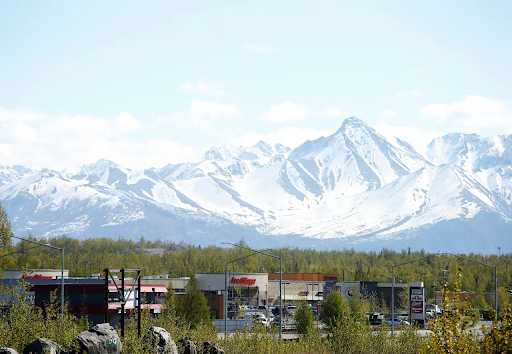As Alaskans brace for the long, cold months ahead, the importance of proper insulation cannot be overstated. Winters in Alaska are not just a test of endurance; they’re a test of preparation. With freezing temperatures, icy winds, and heavy snowfall, poorly insulated homes and businesses face higher energy bills, drafty interiors, and the risk of structural damage. Fortunately, advances in insulation technology and services can turn these challenges into opportunities for comfort, savings, and sustainability.
Companies like Northern Insulation Solutions are leading this shift, offering tailored solutions to ensure winter-ready buildings across the state.
Why Insulation Is Crucial During Alaska’s Winters
Winter in Alaska is not just cold—it’s extreme. Average temperatures can plunge well below zero, with some areas experiencing sub-Arctic conditions for months. For homes and businesses alike, insulation is the first line of defense against these harsh elements.
The High Costs of Poor Insulation
Skyrocketing Energy Bills: Heat loss through poorly insulated walls, roofs, and floors forces heating systems to work overtime, driving up energy costs.
Uncomfortable Living Spaces: Drafts and uneven temperatures create an unpleasant indoor environment, particularly in older or improperly insulated buildings.
Structural Damage Risks: Ice dams, frozen pipes, and moisture buildup are common problems that can lead to costly repairs if insulation isn’t up to par.
How Insulation Protects Buildings in Winter
Thermal Barrier: Insulation slows heat transfer, keeping warm air inside and cold air out.
Moisture Control: Proper insulation prevents condensation that can lead to mold, rot, or structural weakening.
Energy Efficiency: By reducing heat loss, insulation minimizes the strain on heating systems, saving money and reducing environmental impact.
Types of Insulation Best Suited for Alaskan Winters
Not all insulation is created equal. The extreme climate in Alaska requires materials and techniques specifically designed to withstand severe cold, resist moisture, and provide long-lasting protection.
1. Spray Foam Insulation
Spray foam is one of the most effective insulation options for Alaska. It seals gaps, cracks, and hard-to-reach areas, creating an airtight barrier against the elements. It’s particularly effective for:
Attics and crawl spaces
Walls in older homes
Metal buildings and garages
2. Mechanical Insulation
Mechanical insulation is essential for industrial and commercial facilities. By insulating pipes, tanks, and HVAC systems, it ensures safety, efficiency, and compliance even in freezing conditions.
3. Tank Insulation
For businesses relying on water or fuel tanks, professional tank insulation protects against freezing and reduces energy loss. Spray foam and custom solutions are ideal for keeping tanks functional throughout winter.
4. Concrete Lifting
Alaska’s freeze-thaw cycle can wreak havoc on concrete surfaces. Polyurethane foam concrete lifting stabilizes and levels these surfaces, preventing further damage and ensuring safety.
Preparing for Winter: The Growing Demand for Insulation Services
As winter approaches, homeowners and businesses are taking steps to ensure their buildings are ready for the season. The demand for insulation services in Alaska is at an all-time high, driven by the need for comfort, energy efficiency, and long-term savings.
Key Trends Driving Demand
Energy Awareness: Rising energy costs and a focus on sustainability are encouraging Alaskans to invest in insulation upgrades.
Weather Readiness: The unpredictability of winter storms has heightened the importance of proactive preparation.
Aging Buildings: Many structures in Alaska were built before modern insulation standards, making retrofits a priority.
Benefits of Upgrading Insulation
Immediate Energy Savings: Upgrading your insulation can lead to significant reductions in heating costs, potentially saving you up to 30% on your energy bills. This financial security is a significant benefit during Alaska’s long winters.
Enhanced Comfort: By sealing drafts and improving thermal resistance, insulation upgrades can create a more pleasant living or working environment. This enhanced comfort can make the long Alaskan winters more bearable, putting you more at ease.
Property Value Boost: Insulation upgrades are a smart investment that increases the value and longevity of a building.
Northern Insulation Solutions: Alaska’s Winter Readiness Experts
As winter approaches, Northern Insulation Solutions is leading the way in helping Alaskans prepare for the season. With over 50 years of experience, they understand the unique challenges posed by Alaska’s extreme climate and offer tailored solutions to address them.
Comprehensive Winter-Ready Services
Northern Insulation Solutions provides a range of services designed to prepare homes and businesses for winter, including:
Spray Foam Insulation: Ideal for sealing gaps and providing superior thermal resistance.
Mechanical Insulation: Essential for industrial facilities needing efficient and safe operations in freezing temperatures.
Tank Insulation: Custom solutions to prevent freezing and maintain operational efficiency.
Fabrication: Custom valve vaults, lift stations, and insulation blankets built to withstand winter conditions.
Concrete Lifting: Protecting and repairing surfaces affected by Alaska’s freeze-thaw cycle.
Why Choose Northern Insulation Solutions?
Local Expertise: With deep roots in Alaska, the team at Northern Insulation Solutions understands the unique challenges posed by Alaska's extreme climate. This local expertise allows them to provide tailored solutions that meet the specific needs of Alaskan homes and businesses.
Top-Tier Products: Partnering with industry-leading brands ensures long-lasting performance and durability.
Customer-Centric Approach: Services are tailored to each client’s needs, ensuring optimal results.
Proven Track Record: Over five decades of experience and a reputation for excellence make them a trusted choice for insulation services.
As winter looms, there’s no better time to ensure your building is prepared for the challenges ahead. Visit Northern Insulation Solutions’ Service Areas to see where they operate, or explore their Services page to find the perfect solution for your insulation needs. Don’t let the cold catch you unprepared—partner with Northern Insulation Solutions for a warmer, more efficient winter.


















